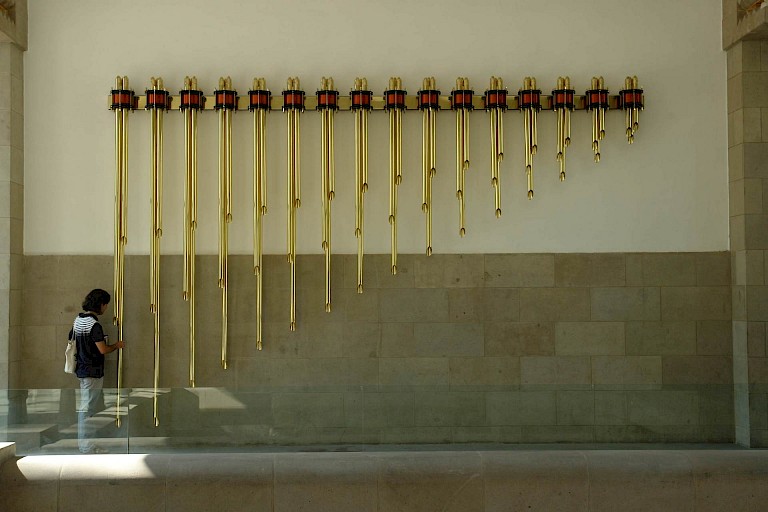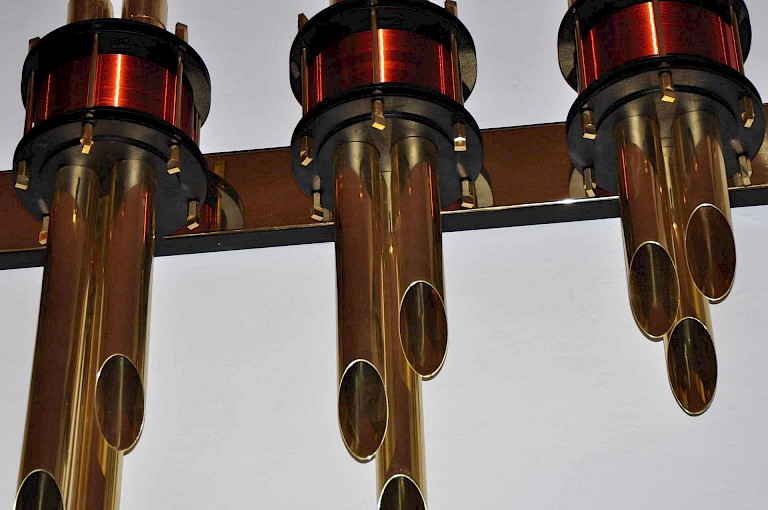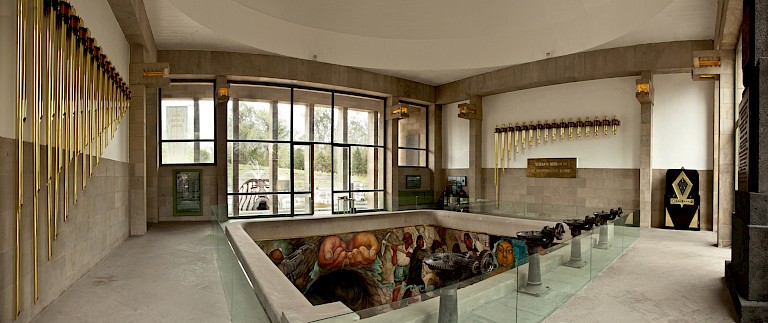



As a public project, Guzik’s chamber stands out as one of only a few permanent sound installations in Mexico, relative to the large number of permanent visual and sculptural public monuments. It is remarkable for both its complexity and the harmonization of that complexity with the specificities of the site. The resonance machinery is the culmination of more than two decades of research by the artist. As part of the restoration of an architectural complex whose function was the passage of a vital substance—water—it directly taps into sources of water to produce its sounds, and it does so while resurrecting a 2,500-year-old mathematical matrix. The ancient Greek source of the matrix also finds an echo in the architecture, whose portico and dome recall the Pantheon of ancient civilization.
According to the artist, the hypnotic music produced in the chamber “seeks to create in listeners a state of introspection,” to evoke awareness of the movement of water through Mexico City, and indeed, the earth. Its purpose is to preserve “the original motifs of [the] enclosure: contemplation and awareness.” It is an appropriately complex and aesthetically sensitive homage to water, and to Diego Rivera, whose 272 square-meter mural was itself a technical and artistic innovation, since it was to remain permanently submerged and viewed through the substance it celebrated and whose story it told.
According to an OECD report, by 2030, the number of people affected by “severe water stress” will exceed 3.9 billion. In an era of increasing water scarcity due to unsustainable use and management, and the unchecked commodification of this vital resource, Cámara Lambdoma, sited in a popularly frequented public space, is commendable for its intervention in living cultural memory. Official statistics report that 72,400 have visited the chamber to date. Through music, it reminds its audiences of the importance of water to life on earth via uniquely resonant means. The project won first prize in the International Festival of New Media Arts Transitio_MX 04 (2011).
All copyright belongs to Shanghai Academy of Fine Arts, Shanghai University.



